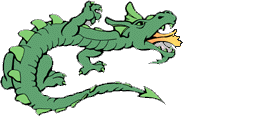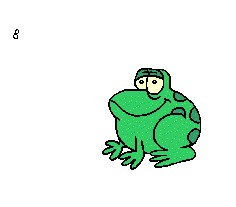


A Water Dragon is considered juvenile when it`s body is approximately 3 inches in lenght from snout to vent, with tail intact. When dragons reach a length of 10 to 12 inches, they are usually around a year old, and are still showing there female characteristics. When a dragon reaches about a year and a half in age, around 4.5-6 inches snout to vent or 16- 18 inches total lenght, there secondary features will be developing.
A males head will begin to get larger and wider and even more triangular. The crest on his neck will begin to get higher, and the spikes much longer. The spikes on his back will also get larger. The spikes on the base of the tail will get higher like a secondary dorsal crest. The femoral pores on the underside of the back legs will get wider, and darker and fill with a waxy substance. These pores will feel bumpy compared to the female which will stay small smooth and indistinct. Also as the male approaches adulthood you will notice that his body will be more triangular shaped...vertically, and that the base of the tail is much more triangular than that of the female.
An adult females body is more rounded and pear sheped than that of the male, especially around the abdominal area. And her tail should remain rounded in apperance.
If your Dragon gets to be around, 5 inches from nose to vent or longer, and it`s total lenght is 18 inches or more and you have`nt seen any of these changes, you most likely have a girl.
If you do have a female you need to provide her with a laying box. If she does develop eggs and does`nt have what she considers a proper place to lay her eggs, she may hold them and become egg bound. This could lead to death if not discovered quickly.
Egg development takes a great toll on the female. She needs to be in good health to come through it with a clean bill of health. She will need a nutritious diet, and will need to be kept at the proper temperature. Also while she is pregnant she will need to be given vitamin supplements daily. The female will need calcium in order to shell the eggs. If she is not getting enough in her diet, she will use calcium from her bones and may become calcium deficient. As explained on the main Water Dragon care page proper uvb lighting is necessary for proper calcium absorbtion. Calcium deficiency or metabolic bone disease is very serious and could lead to death without proper medical attention. You can find out more about this ailment in my disease and treatment pages.
To hibernate your Water Dragons, in late fall or early winter, reduce the photoperiod from 12 to 14 hours of daylight to 10 hours of light and 14 dark. The temperature during the day should be reduced to 75-78 degrees F, with a warmer area that reaches 80-84 degrees F. The nighttime temperature should be reduced to 68-74 degrees F. Instead of feeding them everyday or everyother, reduce feeding to once a week. This period of reduced heat and light should last 2 months.
At the end of this period, the Dragons can be placed back on the normal photoperiod of 12-14 hours and temps of 84-88 degrees F during the day and 75-80 degrees F during the night can be restored. Feedings can be restored back to there normal intervals.
Females will sometimes become stressed or injured during breeding season if the male is to persistent. If the female appears stressed or becomes injured it is a good idea to remove her to a different enclosure until she is recovered or calmed down. Same thing goes for the male for that matter. Rarely a male will injure his hemipenis during breeding season and will have to be removed until it is healed, and seeing as how the hemipenis is an internal organ, it will take some time, and he will probably have to sit out that breeding season and wait till next year. But I will cover more on the subject on my treatment page.
You can keep 1 male with up to 3 females.
After about 4 weeks of development the eggs will become apparent in the plumpness of the females body and later the actual outline of the eggs can be seen against the skin of the abdomen. This would be a very good time to prepare a egg laying site for her. this should be a chamber with moist vermiculite or moist peat and sand mixture about 9 inches deep. You can place a piece of slate or board over the layer, the female will most likely start to burrow under the edge of it. The 8 - 12 white leathery eggs about 1 in / 2.5 cm in length will be laid in a chamber at the base of the burrow.

Place the eggs about a inch or more apart, so that the hatchlings will not cause damage to the still unhatched eggs. The eggs should be placed 2 / 3 rds buried in vermiculite, with 1 / 3 rd exposed. You can place a small amount of moss over the exposed part of the egg to ensure it stays moist. Incubate them at 84-86 degrees F. With a light misting every two days or so.
The eggs will hatch about 65 days after being laid. But it has been known to take 55-80 days depending on incubation temperatures and humidity. As hatching time nears keep a careful eye on the eggs. The hatchlings will slit the egg shell with a special egg tooth in order to get out. Individual hatchlings may take anywhere from 6 - 24 hours, while all fertile, fully developed eggs should have hatched within a 48 hour period.
Allow the hatchlings to completely free themselves from the egg shells before attempting to handle them. They will still have the yolk sac attached to them and must be allowed to fully absorb it`s contents. As soon as they are free they can be removed to a seperate enclosure.

